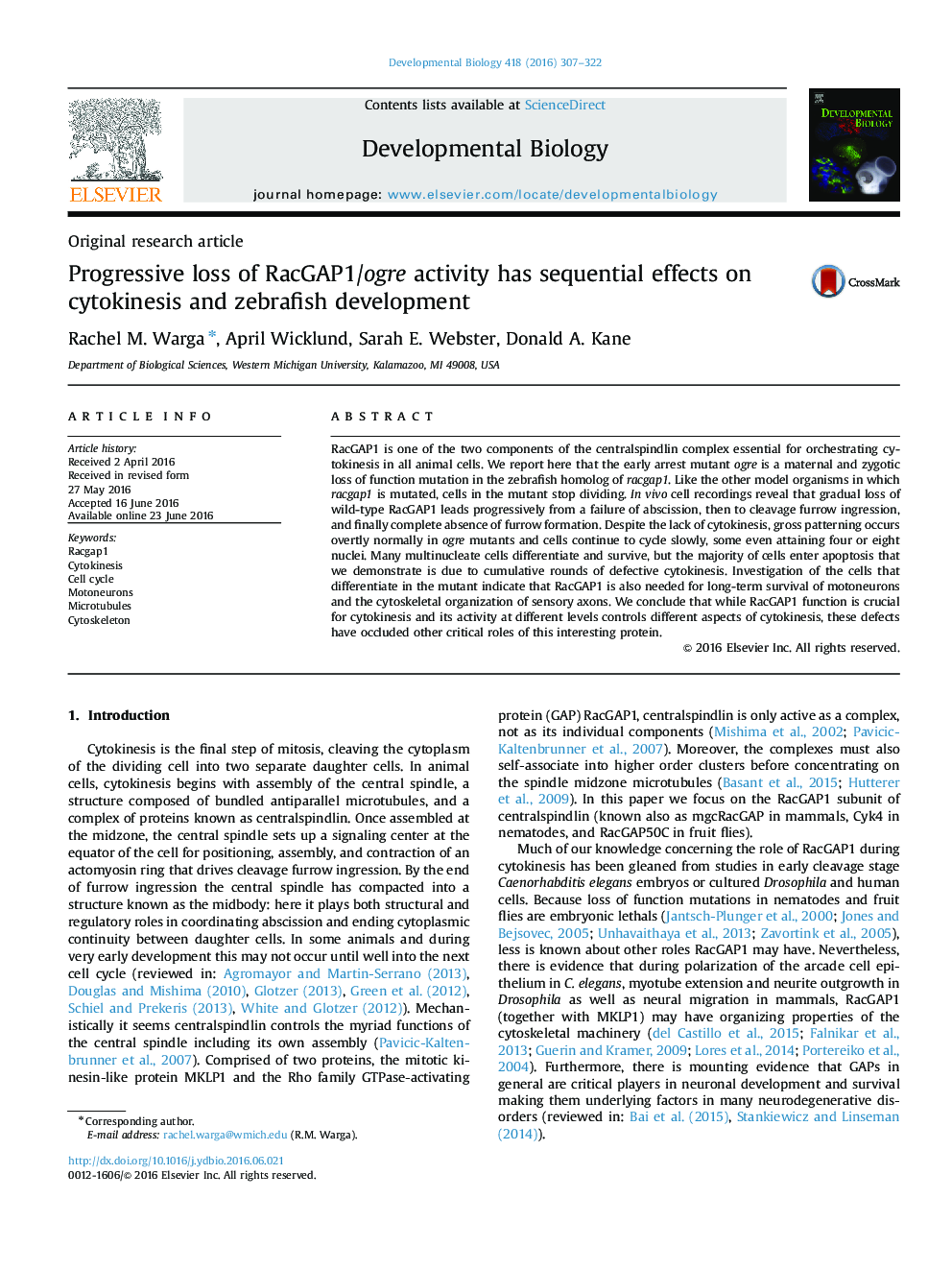| Article ID | Journal | Published Year | Pages | File Type |
|---|---|---|---|---|
| 5532061 | Developmental Biology | 2016 | 16 Pages |
â¢ogre is a maternal and zygotic loss of function mutation in racgap1.â¢Progressive loss of RacGAP1 effects different aspects of cytokinesis.â¢Cells in the ogre mutant continue to cycle after becoming binucleate.â¢Cumulative rounds of cytokinesis cause cells to enter apoptosis.â¢RacGAP1 is also critical for axon morphogenesis and motoneuron survival.
RacGAP1 is one of the two components of the centralspindlin complex essential for orchestrating cytokinesis in all animal cells. We report here that the early arrest mutant ogre is a maternal and zygotic loss of function mutation in the zebrafish homolog of racgap1. Like the other model organisms in which racgap1 is mutated, cells in the mutant stop dividing. In vivo cell recordings reveal that gradual loss of wild-type RacGAP1 leads progressively from a failure of abscission, then to cleavage furrow ingression, and finally complete absence of furrow formation. Despite the lack of cytokinesis, gross patterning occurs overtly normally in ogre mutants and cells continue to cycle slowly, some even attaining four or eight nuclei. Many multinucleate cells differentiate and survive, but the majority of cells enter apoptosis that we demonstrate is due to cumulative rounds of defective cytokinesis. Investigation of the cells that differentiate in the mutant indicate that RacGAP1 is also needed for long-term survival of motoneurons and the cytoskeletal organization of sensory axons. We conclude that while RacGAP1 function is crucial for cytokinesis and its activity at different levels controls different aspects of cytokinesis, these defects have occluded other critical roles of this interesting protein.
Graphical abstractDownload high-res image (186KB)Download full-size image
